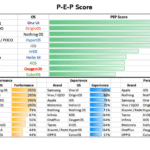
In 2025, smartphone brands are doing more than chasing regular specifications and features, and getting more focused on design. And at the centre of that design shift is a seemingly small, but surprisingly strategic metric: thickness.
Smartphones launched through 2024 reveal a clear trend across price tiers that brands began using slimness as a visual cue of premium value, especially in the fiercely competitive Rs 25,000–Rs 50,000 segment. Meanwhile, foldables, which were once considered bulky tech experiments are now setting new benchmarks for sleekness and style.
What 2024 Launches Tell Us About Slimness
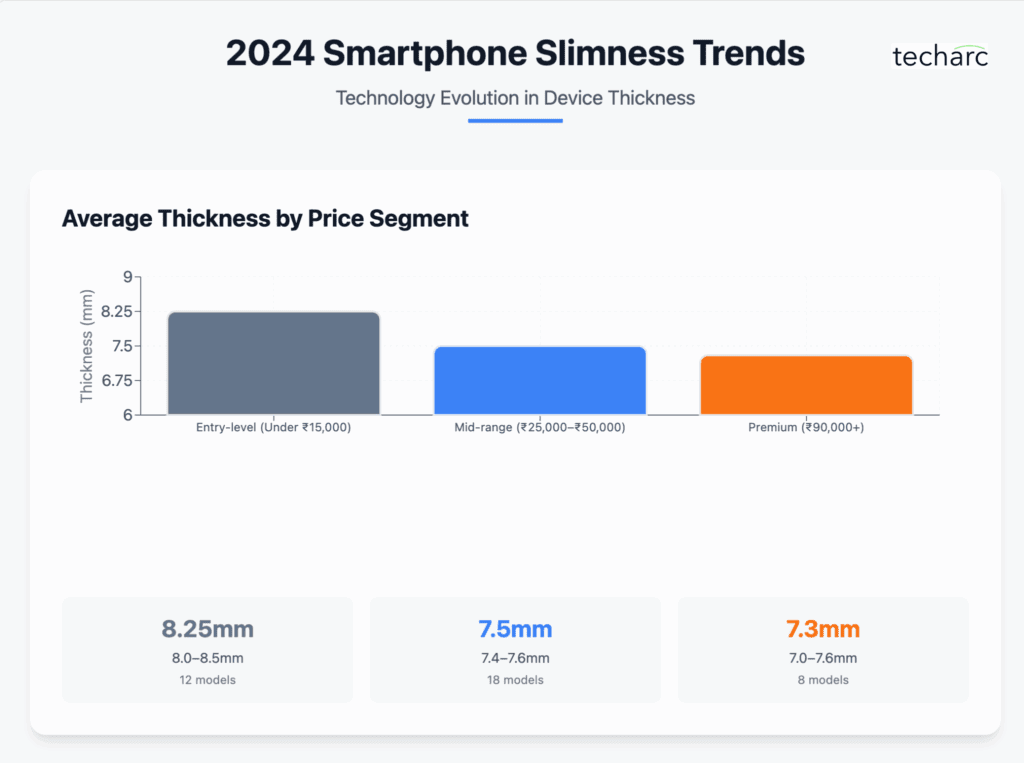
At the entry level, smartphones priced under Rs 15,000 largely ranged between 8.0mm to 8.5mm in thickness. With plastic bodies and 5000mAh batteries, slimness wasn’t a priority and nor was it expected by the target audience.
In contrast, mid-range devices between Rs 25,000 and Rs 50,000 consistently came in at 7.4mm to 7.6mm, positioning slimness as part of the product identity. Here, thinness wasn’t just a design flourish but it was a deliberate signal to users seeking a blend of performance, aesthetics, and refinement.
Interestingly, flagship bar phones (Rs 90,000 and above) didn’t always lead the slimness conversation. Devices like the Galaxy S24 measured thicker than some mid-rangers at around 7.6mm due to internal constraints like vapor chambers and advanced camera modules.
Foldables, however, bucked the trend completely. With models like the Samsung Galaxy Z Flip 6 at 6.9mm and the Tecno Flip at just 6.7mm, 2024 marked a turning point that foldables were no longer just tech-forward, they were design-forward, too.
Mid-Range Dominated the Slimness Race
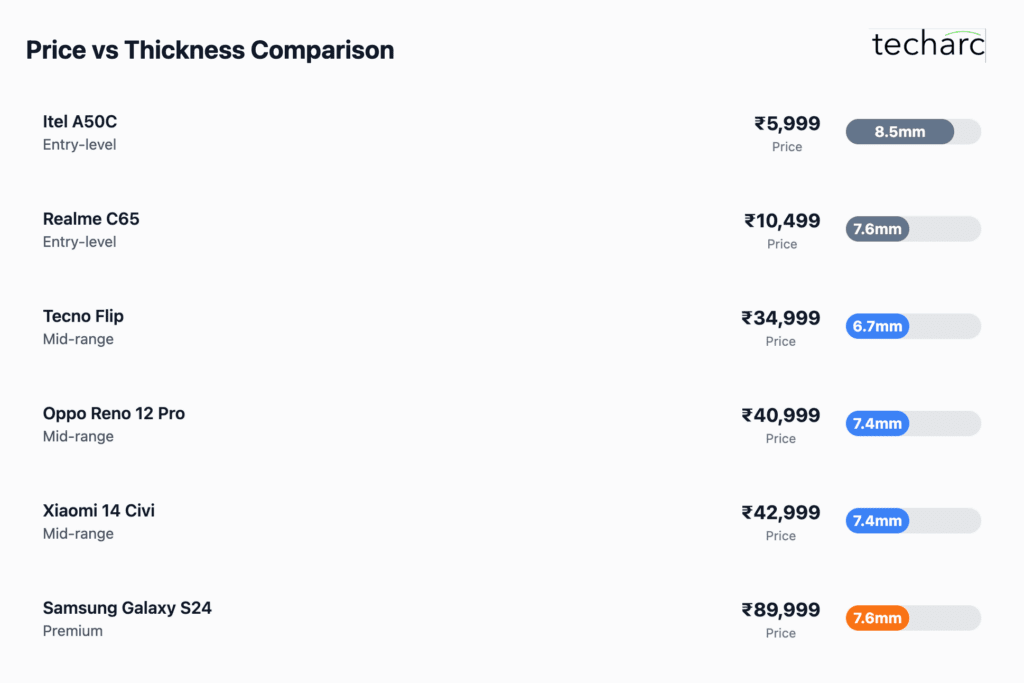
One of the most notable shifts of 2024 was how aggressively brands in the Rs 30,000–Rs 45,000 range leaned into slim design as a key differentiator.
The Xiaomi 14 Civi stood out with its 7.4mm chassis, curved AMOLED panel, stereo speakers, and glass back, all packaged under Rs 45,000. The midrange smartphone felt like a flagship with focus on features and specification. The product blurred the lines between affordability and aspiration.
Similarly, the Oppo Reno 12 Pro, also at 7.4mm, focused on ergonomic comfort, Pantone-inspired colourways, and AI-powered imaging, targeting users who now expect both power and style from their devices.
This shift suggests that brands are acutely aware of the “perception premium” that comes with a slim, well-finished device. Slimness, in this segment, is more about positioning than engineering.
Flagships Chose Function Over Form
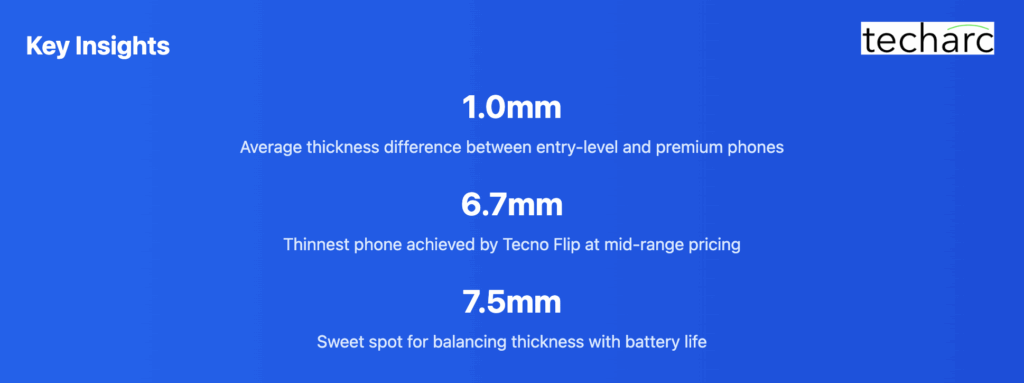
Contrary to expectation, not all 2024 flagships pushed the slimness boundary. Samsung’s Galaxy S24, while premium in performance, maintained a 7.6mm thickness, which is thicker than Xiaomi and Oppo’s mid-range offerings.
This happened because high-end phones increasingly prioritise:
- Large image sensors and periscope modules
- Advanced cooling systems for top-tier chipsets
- Reinforced frames and water resistance (e.g. IP68 rating)
These engineering decisions limit how far brands can push slimness without compromising structural integrity or performance consistency.
Strategic Implications for 2025
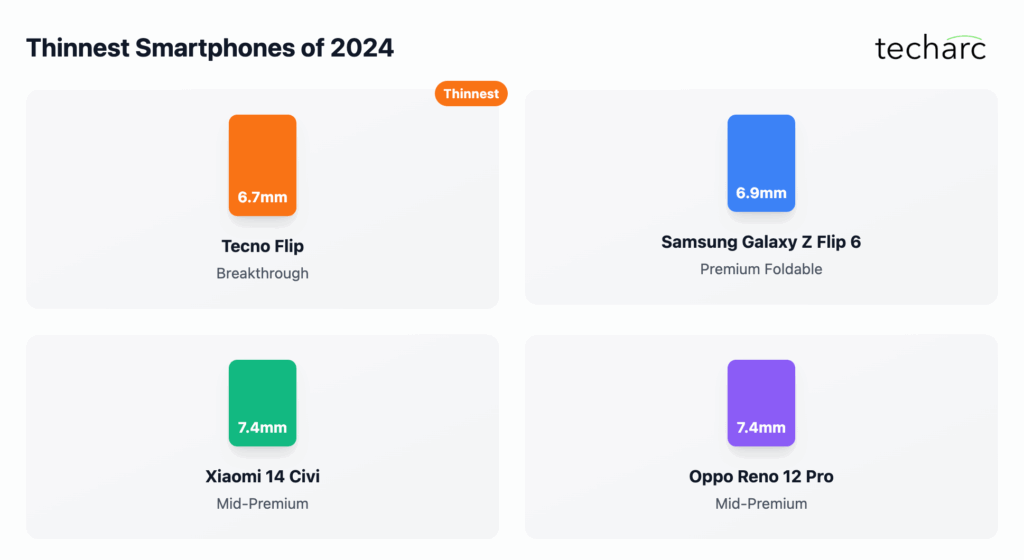
As the smartphone market matures, differentiation is shifting away from sheer specs and toward sensory experience. Slimness, in particular, has become a visible cue of thoughtful product design, especially in a cluttered mid-tier market.
Here’s what to expect in 2025:
- Mid-range users are increasingly design-sensitive. A phone doesn’t need the best processor but it needs to feel like a flagship. Slimness delivers that.
- Foldables have a new role to play as status symbols. The fact that they’re thinner than bar phones changes the value equation. They’re no longer just future-facing but also design-led.
- Entry-level phones will remain bulkier unless breakthroughs in materials or battery tech make thin, affordable phones viable at scale.
- Flagships must justify their thickness whether through imaging, cooling, or unique material choices. If not, slimmer mid-rangers will continue to erode their perceived superiority.

